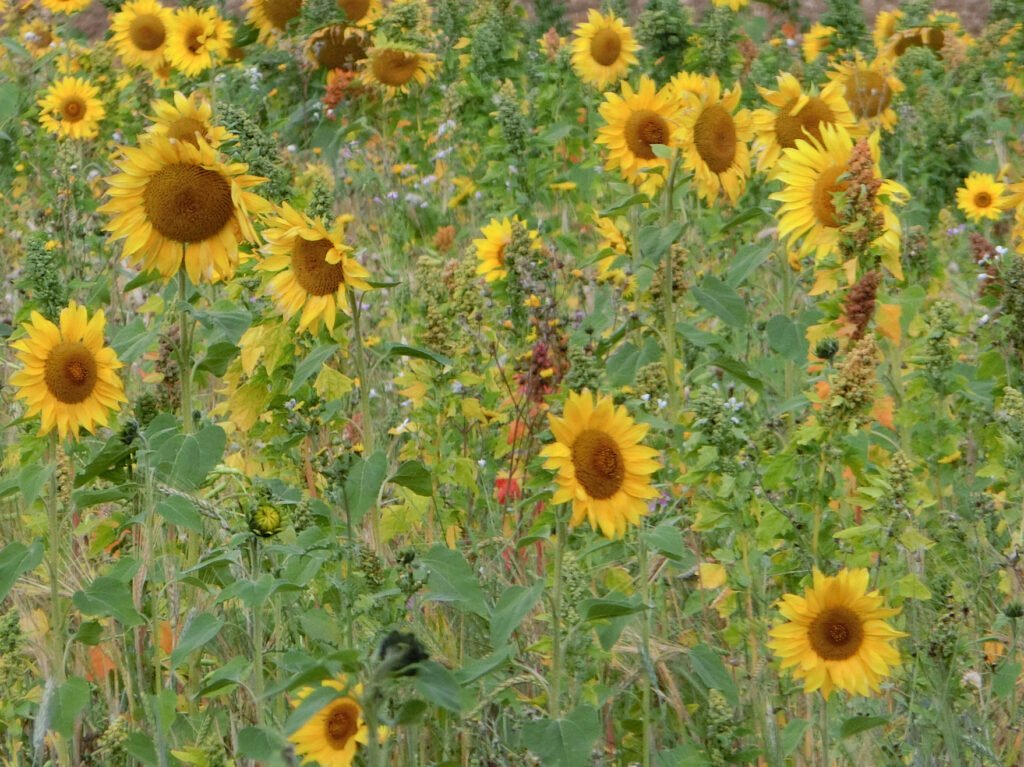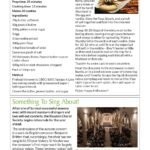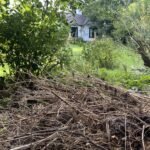By Tricia Moxey, Trustee

The topography, geology and fertile soils of the Hundred Parishes have combined to provide suitable conditions for farming.
Currently, cereals cover about two-thirds of our arable fields with crops of winter or spring-sown barley, oats and wheat. 20% of fields have been planted with oil seed rape or vegetables. Grasslands make up the remainder of fields, providing forage for cattle, sheep or horses.
Inevitably the weather influences the success or otherwise of crops. This spring has been exceptionally warm, very dry and sunny so there are concerns about a possible drought, reduced crop growth and lower yields. Some farmers started earlier than usual to irrigate vulnerable crops, and all are hoping for some more rainy days ahead as plants need moisture to absorb the nutrients they require.
Healthy soils will retain more moisture; some farmers are planting ‘cover crops’ beneath the main crop as this will help to reduce water run-off and leaching of nutrients. Leaving wildflower margins around fields encourages assorted predators that eat pests of crops.
Many farmers diversify their activities to spread the risk: planting different crops, creating fishing lakes for anglers or converting barns for holiday lets or wedding venues.
In recent years, some have been able to realise the potential of their south-facing fields, conveniently located over underlying chalk, to plant grape vines. Guided by the results of detailed soil analysis, coupled with careful selection of appropriate species of grape, these winemakers are now producing first class sparkling English wines and also bottles of excellent red, white or rosé wine. Many offer tours of their vineyards as an added attraction.
Walkers following routes from our website will appreciate the area’s scenic beauty and rich agricultural heritage. Routes 127 and 161 pass vineyards and we should look out for other unusual crops.
For further information please see www.hundredparishes.org.uk












